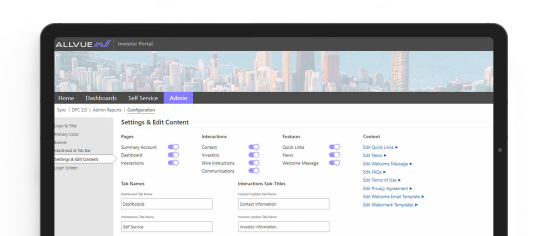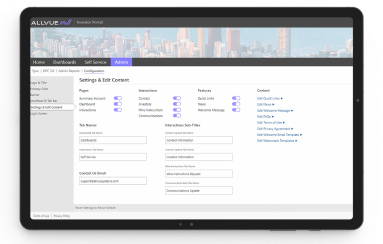
By: Richard Change
Head of PFA Solutions
March 28, 2025
Compensation management refers to the processes and strategies that firms use to determine and administer employee remuneration. In most industries, compensation primarily consists of salaries and bonuses, both of which are relatively straightforward to manage and administer.
However, for investment firms, such as those that deal with alternative assets like private equity, private debt, and venture capital, compensation structures are more complex.
Beyond traditional salaries and bonuses, compensation in these firms also includes performance-based incentives like equity stakes and carried interest. These extra components add complexity to compensation management and require careful administration to ensure fairness, compliance, and alignment with a firm’s objectives.
In this guide, we’ll explore the basics of compensation management, break down the unique components of compensation for investment professionals, and examine some of the challenges firms face in this critical area. We’ll also share best practices for streamlining the process.
Understanding Compensation Management in Investment Firms
Compensation management is the strategic process of designing, implementing, and managing pay and benefits packages for employees. It involves determining the appropriate mix of compensation elements, such as base salaries, bonuses, carried interest and equity incentives) to award to employees.
The ultimate goal is to create a system that motivates and retains employees, makes the firm attractive from a recruitment standpoint, and aligns individual interests with the firm’s long-term success.
Benefits of Compensation Management for Investment Firms
Compensation management plays a key role in shaping an investment firm’s success. Here’s exactly why it matters:
Attracting and Retaining Talent
Private equity, private debt, venture capital, and other alternative investment firms operate in highly competitive markets where top talent is both scarce and in high demand.
Compensation structures that offer competitive salaries and bonuses as well as great long-term incentives can help firms stand out in the talent market, and thus secure and retain the best candidates in the industry. According to Lattice, compensation is the leading cause of staff turnover in organizations, with 55% of employees leaving for jobs with greater compensation.
Driving Employee Performance and Motivation
Well-designed compensation plans motivate employees to perform at their best by linking rewards to individual and team achievements. Moreover, transparent and fair compensation policies enhance employee satisfaction, which then leads to higher engagement, productivity, and loyalty.
Aligning Interests with Long-term Goals
Effective compensation management ensures that pay structures align with the firm’s strategic goals. For example, incentive-based pay, such as equity compensation and carried interest, ties employees’ rewards to the firm’s long-term success, creating a shared sense of purpose.
Ensuring Fairness and Transparency
A well-defined compensation management process promotes fairness by establishing clear criteria for pay decisions. This reduces the risk of disputes and fosters a positive workplace culture.
Key Components of Compensation for Investment Professionals
For professionals in private equity, private debt, and venture capital, compensation typically includes a mix of fixed and variable components. Each component serves a specific purpose and plays a critical role in attracting, motivating, and retaining top talent.
Base Salary
This is a fixed amount that is paid regularly to an employee regardless of performance of the firm, or any team or individual achievements. The actual figure depends on the employee’s role, experience, and current market standards.
While a base salary provides financial stability, it usually constitutes only a small portion of an investment professional’s total compensation, particularly for higher-ranking roles.
Bonuses
Bonuses are a form of variable compensation tied to individual, team, or firm performance. They are typically awarded annually. However, bonuses are not guaranteed and can vary significantly based on results.
Carried Interest
Carried interest is a share of the profits earned by a fund. It’s allocated to investment professionals as a performance incentive. It aligns employees’ interests with those of investors, as carry is only realized when the fund achieves specific return thresholds.
Carry structures vary across private equity, private debt, and venture capital, often reflecting the risk and return profiles of each asset class. It’s usually reserved for partners and senior professionals, with allocation structures varying by firm and fund type.
Equity Compensation
Equity compensation grants employees ownership stakes in the firm. It’s common in investment firms that are publicly traded or structured as partnerships and allows employees to benefit from the firm’s growth. Equity compensation may include stock options, restricted stock units (RSUs), and performance shares. Like carried interest, equity compensation is usually reserved for senior professionals in a firm.
Co-investment Opportunities
Co-investment opportunities allow employees to invest their own capital alongside the firm in its deals. This increases their personal stake in the fund’s performance. They stand to benefit directly from the returns generated, creating a powerful incentive to contribute to the fund’s overall success.
Challenges in Managing Compensation for Investment Firms
Managing compensation in investment firms comes with several challenges, unfortunately. Let’s look at some of the most notable challenges.
Complexity of Carried Interest and Performance-Based Pay
Carried interest, as we’ve seen, is a key element of compensation in alternative investment firms. However, its calculation and distribution can be highly complex, especially when dealing with multiple funds, varying hurdle rates, and waterfall distribution structures.
Further compounding the issue is that many firms still rely on manual processes and spreadsheets to calculate carry. These methods increase the risk of errors, some of which can have disastrous consequences for an organization.
Regulatory and Tax Compliance Obligations
Investment firms must navigate a landscape of regulatory requirements that govern how compensation is structured and reported. For example, in the U.S., the SEC and IRS have specific rules governing the reporting and taxation of carried interest, bonuses, and other incentive pay. Non-compliance with these rules can lead to legal penalties and reputation damage.
For firms with international operations, they must contend with a web of tax rules, reporting requirements, and compliance obligations that vary by jurisdiction. For instance, the new EU Pay Transparency Directive mandates that companies with over 250 employees disclose detailed salary information. And if there are gender pay gaps of 5% or more that can’t be justified, firms need to take action or risk financial penalties.
Additionally, frequent tax laws and financial regulations changes mean that firms must be able to adjust their compensation structures quickly to remain compliant.
Ensuring Fairness and Transparency in Compensation
Maintaining fairness and transparency in compensation is crucial for employee morale and retention. But this is not always easy.
Different teams and levels within an investment firm may have varying expectations regarding compensation. For example, allocating bonuses fairly can be particularly challenging, particularly when dealing with subjective performance evaluations or team contributions.
Big compensation disparities between senior and junior employees or across different teams can lead to dissatisfaction and turnover. Additionally, both employees and investors expect transparency in compensation decisions. A lack of clarity in how compensation is determined can erode trust, damaging the firm’s reputation and its ability to retain top talent.
Best practices for streamlining compensation management
Effective compensation management is critical for investment firms to remain competitive, compliant, and efficient. However, the complexity of compensation structures, coupled with regulatory demands, often makes this a daunting task, as we’ve seen.
Luckily, there are several strategies that firms can use to streamline the process.
Establish a Clear Compensation Structure
One of the most critical steps is establishing clear compensation structures and policies that reflect the roles, responsibilities, and performance expectations of employees at all levels.
A well-defined framework eliminates ambiguity and ensures employees understand how their compensation aligns with their performance and the firm’s success. Standardized policies for carried interest distribution, bonus structures, and equity compensation can also prevent discrepancies and promote consistency.
Leverage Compensation Management Technology
Manual compensation calculations are not only time-consuming but also prone to errors, especially when dealing with complex structures like carried interest or deferred pay. These mistakes can lead to financial losses, compliance issues, and even employee dissatisfaction.
Compensation management software can eliminate these risks and foster operational efficiency by automating workflows and calculations. These tools, which have become very popular in recent times, and whose market is growing very fast offer several benefits including the following:
- Automating carried interest and bonus calculations: Compensation management software can automate the calculation and allocation of carried interest across multiple funds. It can also track performance metrics and automatically link them to payouts. For firms managing the process in spreadsheets, a lack of automation can add errors, time and complexity to the process.
- Enhancing transparency: Compensation management software enhances transparency by providing real-time insights into how compensation is structured and distributed. Employees and stakeholders can access dashboards that display earnings, projected payouts, and performance-related incentives. This transparency fosters trust among employees by ensuring they understand how their compensation is structured. For investors, clear information on how returns are shared fosters confidence in the firm’s operations.
- Ensuring compliance and audit readiness: Compensation management software can also ensure compliance and audit readiness by automating documentation and ensuring accurate record-keeping. It can generate audit trails, track regulatory changes, and automatically adjust calculations based on updated compliance rules. Additionally, these tools facilitate seamless reporting, making it easier to provide auditors and regulators with accurate and up-to-date compensation data.
Conduct Regular Compensation Reviews and Benchmarking
To remain competitive, firms should regularly review and benchmark their compensation structures against industry standards. This involves:
- Analyzing market trends to ensure compensation packages are competitive and appealing to top talent.
- Soliciting employee feedback to identify pain points and areas for improvement.
- Adjusting compensation strategies to reflect changes in the market, regulatory environment, or organizational goals.
Regular reviews ensure that compensation remains fair, equitable, and aligned with both employee expectations and industry norms.
The Future of Compensation Management in Alternative Investments
As the investment landscape continues to evolve, so too will compensation management. Emerging trends, such as the use of artificial intelligence (AI) and machine learning, are going to revolutionize how firms design and administer compensation plans.
For example, AI-powered tools can analyze vast amounts of data to identify trends, predict outcomes, and optimize compensation models. This enables firms to create more effective, equitable, and forward-thinking compensation strategies.
Additionally, digital transformation is making it easier for firms to adapt to changing regulatory requirements and investor expectations.
Wrapping Up: How Allvue’s Compensation Management Solutions Support Investment Firms
Allvue’s compensation planning and recommendation software provides investment firms with a powerful, user-friendly platform to streamline compensation management.
Our solution automates carried interest calculations, bonus allocations, and equity compensation tracking, saving time and reducing errors. It also ensures compliance with built-in workflows and reporting tools that keep firms ahead of regulatory requirements. Furthermore, Allvue enhances transparency by providing clear, detailed compensation reports to employees and investors, which help cultivate trust and confidence in the firm’s operations.
If your firm is still relying on spreadsheets or other outdated systems for compensation management, now is the time to reevaluate your approach. With Allvue, you can streamline operations, reduce risks, and free up time for you and your team to focus on what truly matters, which is delivering value to investors and driving business growth.
Turn compensation management from a challenge into a strategic advantage with Allvue. Contact us today or request a free demo of FirmView® to learn more about how our solutions can help your firm stay competitive, and compliant.
Sources
Lattice. Does Pay Matter When It Comes to Employee Retention? https://lattice.com/articles/does-pay-matter-when-it-comes-to-employee-retention/
Council of the European Union. Pay Transparency in the EU. https://www.consilium.europa.eu/en/policies/pay-transparency/
Research and Markets. Compensation Management Software Market by Component Type, Industry Verticals, Deployment Models, End-User, Organization Size – Global Forecast 2025-2030. https://www.researchandmarkets.com/report/compensation-software
More About The Author

Richard Change
Head of PFA Solutions
Richard Change joins Allvue as a member of the senior leadership team, following Allvue’s acquisition of PFA Solutions. In 2012 he set out as co-founder to start PFA Solutions. As the former Chief Architect at a leading private equity firm, Richard Change saw a gap in data standards, as well as limitations on how firms stored and tracked investment information. PFA focused on technology solutions for calculating GP Carried Interest allocations, total compensation management and tracking consolidated investor and portfolio performance information across funds. In addition to his role at PFA Solutions, Richard works with various industry committees and serves on the board on various local organizations. Prior to co-founding PFA Solutions, Richard was the Chief Application Architect at The Carlyle Group. He has over 20 years of technology experience and a deep understanding of fund operations, performance management, carry and co-invest within the Private Capital markets.


